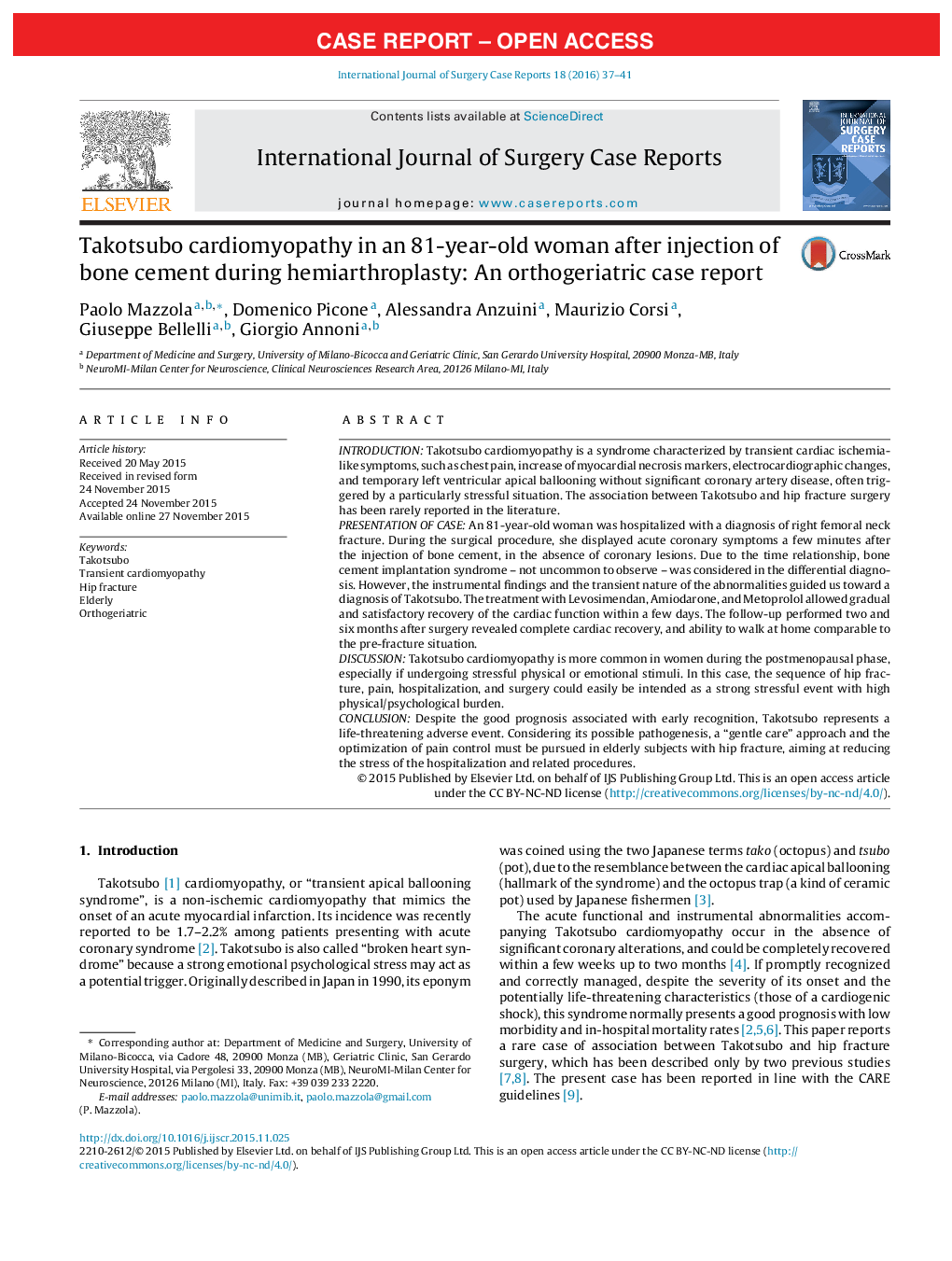| Article ID | Journal | Published Year | Pages | File Type |
|---|---|---|---|---|
| 4288603 | International Journal of Surgery Case Reports | 2016 | 5 Pages |
•Despite the good prognosis when diagnosed early, Takotsubo is a life-threatening event.•Takotsubo must be differentiated from bone cement implantation syndrome (grade 2–3).•A portable ultrasound scanner allows recognizing the apical ballooning and akinesia hallmark.•Approaches to reduce the hospitalization-related stress must be pursued in the elderly.
IntroductionTakotsubo cardiomyopathy is a syndrome characterized by transient cardiac ischemia-like symptoms, such as chest pain, increase of myocardial necrosis markers, electrocardiographic changes, and temporary left ventricular apical ballooning without significant coronary artery disease, often triggered by a particularly stressful situation. The association between Takotsubo and hip fracture surgery has been rarely reported in the literature.Presentation of caseAn 81-year-old woman was hospitalized with a diagnosis of right femoral neck fracture. During the surgical procedure, she displayed acute coronary symptoms a few minutes after the injection of bone cement, in the absence of coronary lesions. Due to the time relationship, bone cement implantation syndrome – not uncommon to observe – was considered in the differential diagnosis. However, the instrumental findings and the transient nature of the abnormalities guided us toward a diagnosis of Takotsubo. The treatment with Levosimendan, Amiodarone, and Metoprolol allowed gradual and satisfactory recovery of the cardiac function within a few days. The follow-up performed two and six months after surgery revealed complete cardiac recovery, and ability to walk at home comparable to the pre-fracture situation.DiscussionTakotsubo cardiomyopathy is more common in women during the postmenopausal phase, especially if undergoing stressful physical or emotional stimuli. In this case, the sequence of hip fracture, pain, hospitalization, and surgery could easily be intended as a strong stressful event with high physical/psychological burden.ConclusionDespite the good prognosis associated with early recognition, Takotsubo represents a life-threatening adverse event. Considering its possible pathogenesis, a “gentle care” approach and the optimization of pain control must be pursued in elderly subjects with hip fracture, aiming at reducing the stress of the hospitalization and related procedures.
